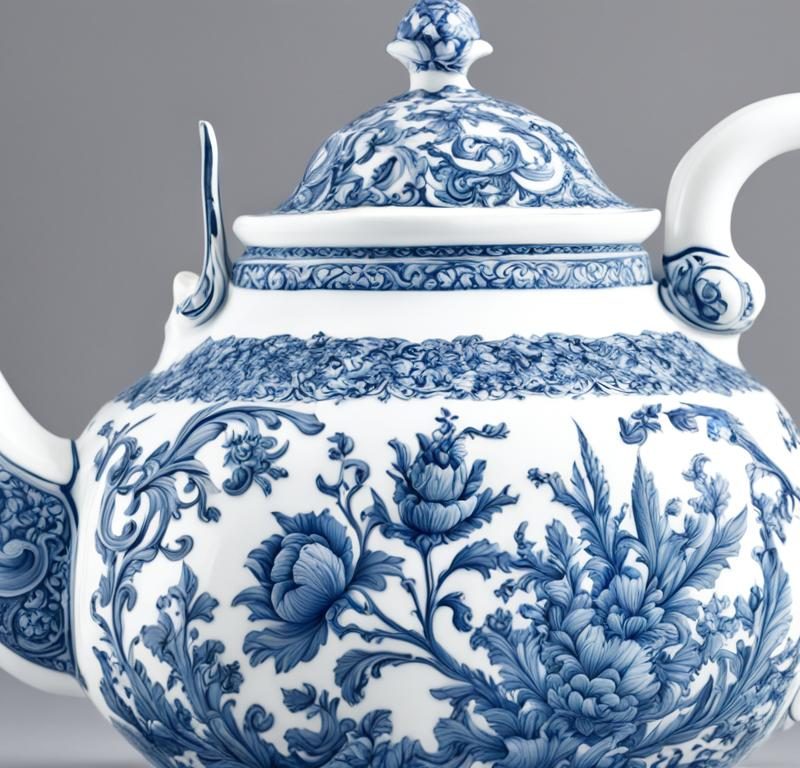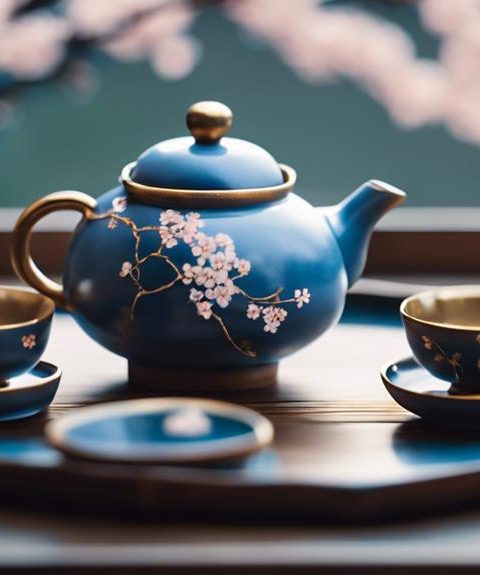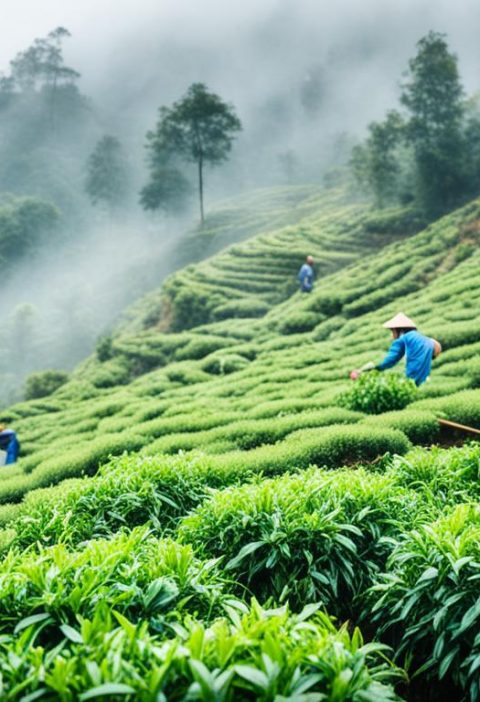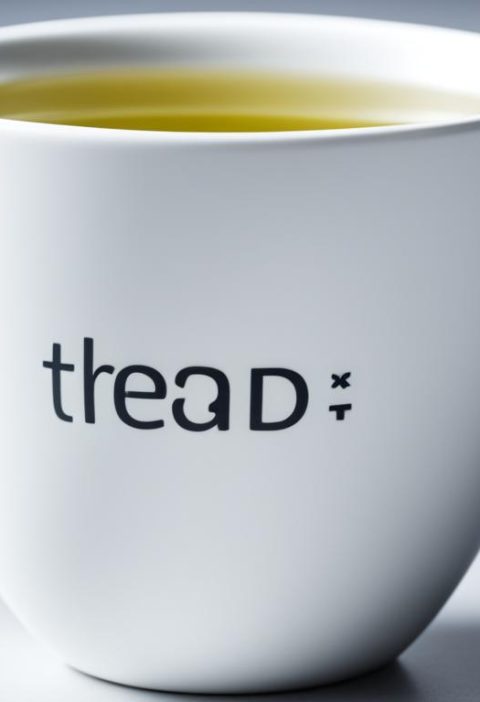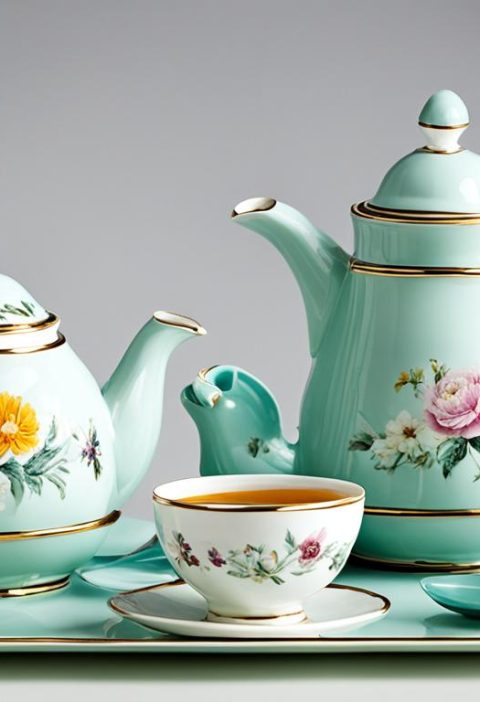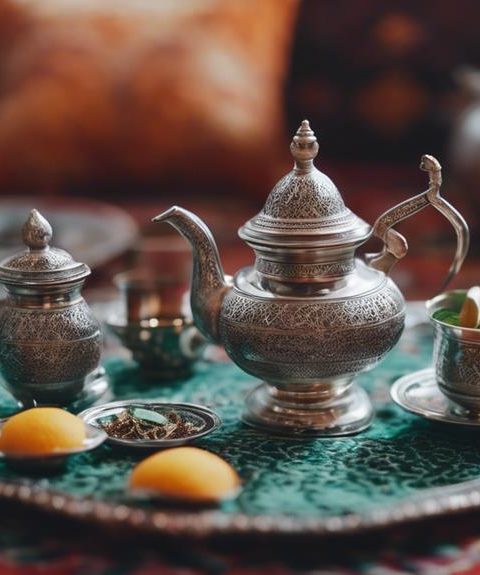Welcome to our exploration of teapot history. We’ll travel through time, looking at how teapots have changed from the ancient days up to now. Through cultures, technology, and art, the shape of the teapot has evolved in remarkable ways.
Teapots have been essential for over 3000 years. The journey started in southeast China. There, the first teapots were made from purple zisha clay and porcelain. This set the stage for teapot design.
The 14th century brought a big change: steeping tea leaves in hot water became popular. This need birthed teapots shaped for this very purpose. Every culture that adopted tea left its touch on teapots. Japan focused on simple elegance, and Europe liked large teapots with intricate designs.
Next came the Industrial Revolution. This period brought big leaps in technology. These advances changed the way teapots were made. Now, people could enjoy a variety of shapes and materials, as was the fashion of the Victorian era.
In the 20th century, teapot design became highly creative. Styles like Art Deco and modernism influenced new designs. Today, designers continue to make teapots that amaze. Nature and pop culture often inspire these pieces.
Key Takeaways:
- The history of teapot design can be traced back over 3000 years to ancient China.
- Teapot design has been influenced by various cultures, including Japan and Europe.
- The Industrial Revolution brought technological advancements and mass production to teapot design.
- Teapot design in the 20th century was inspired by Art Deco and modernist styles.
- Today, teapot design is diverse and innovative, with artists and designers pushing the boundaries of creativity.
Early Teapot Designs in China
Teapot design in China started centuries ago. Early teapots were key in making teapots what they are today. These teapots were made from ancient teapots, crafted with zisha clay and porcelain by Chinese artisans.
In the 14th century, teapots became essential for steeping tea leaves in hot water. They were cleverly designed for this purpose. These teapots quickly became important in Chinese tea culture, adding a touch of elegance and refinement.
The first record of a teapot is from the Yuan Dynasty. It described a Chinese teapot made with purple zisha clay. People cherished these teapots for keeping tea hot and improving its flavor.
These early teapots set the stage for how teapot design would grow in China. The high level of skill and detail in their making influenced future teapot makers.
Key Characteristics of Early Chinese Teapot Designs
Early Chinese teapots had special features:
- They were mainly made from zisha clay and porcelain
- They were small and perfect for serving tea to one person
- They had elegant shapes with rounded bodies and spouts
- Their look was simple yet showcased the beauty of the materials
These features reflected the heart of Chinese tea culture. They also inspired teapot designs in other tea-loving places.
To explore the details of early Chinese teapots, check the table below:
| Teapot Design | Primary Material | Key Features |
|---|---|---|
| Zisha Teapot | Zisha clay | Excellent heat retention, natural tea flavor enhancement |
| Porcelain Teapot | Porcelain | Delicate and translucent, wide array of decorative possibilities |
| Gourd-shaped Teapot | Porcelain | Slightly flattened body resembling a gourd, often adorned with ornate patterns |
Image: Zisha clay teapot
Early Chinese teapot designs, using ancient teapots and zisha clay, were both functional and stunning. They are still a big influence in teapot design today because of their history and culture.
Cultural Influences on Teapot Design
Tea drinking traveled, and so did the design of teapots. Japan developed a style known for its simplicity and beauty. Their teapots, often clay or cast iron, show a perfect mix of looks and use. They’re decorated with nature’s beauty, reflecting Japan’s serene landscapes and changing seasons.
Europe welcomed tea with a need for larger teapots. This brought forth a specific design style. English teapots became known for their beautiful florals and detailed patterns. They were made from different materials like silver and ceramic. These teapots blend luxury with useful features.
The Elegance of Japanese Teapots
In Japan, tea is more than a drink; it’s an art form. This tradition deeply influenced their teapots. Japanese teapots, known as “kyusu,” are made with clay types like purple zisha or red clay. These teapots not only look inviting but they also enhance the tea’s flavor. “Tetsubin” teapots, made of cast iron, keep the tea warm and add a smooth taste.
Japanese teapots show beauty in simplicity, following the idea of “wabi-sabi.” Zen Buddhism’s influence is clear in their focus on mindfulness. This is seen in the simple design and how they’re used to brew and enjoy tea.
European Teapots: Timeless Elegance and Opulence
Europe’s teapot designs are filled with history and a love for the refined. English teapots stand out with their florals and detailed elements. Silver teapots symbolize luxury, being part of elegant social activities. Other teapots made from pewter and ceramic offer diverse, yet captivating, designs. These materials show the skill of the craftsmen.
European teapots brilliantly combine beauty with usefulness, making them timeless pieces.
The Melting Pot of Cultural Influences
Cultural exchanges have continually influenced teapot design. Japanese and European styles have grown together, blending beauty with function. Today, designers from around the world mix various influences in their teapot creations. This has led to a broad range of designs with unique materials and styles.
| Japanese Teapots | European Teapots |
|---|---|
| Emphasis on simplicity and natural motifs | Elaborate floral patterns and ornate designs |
| Clay and cast iron materials | Silver, pewter, and ceramic materials |
| Inspired by Zen philosophy and mindful tea brewing | Showcase elegance, opulence, and a love for ceremony |
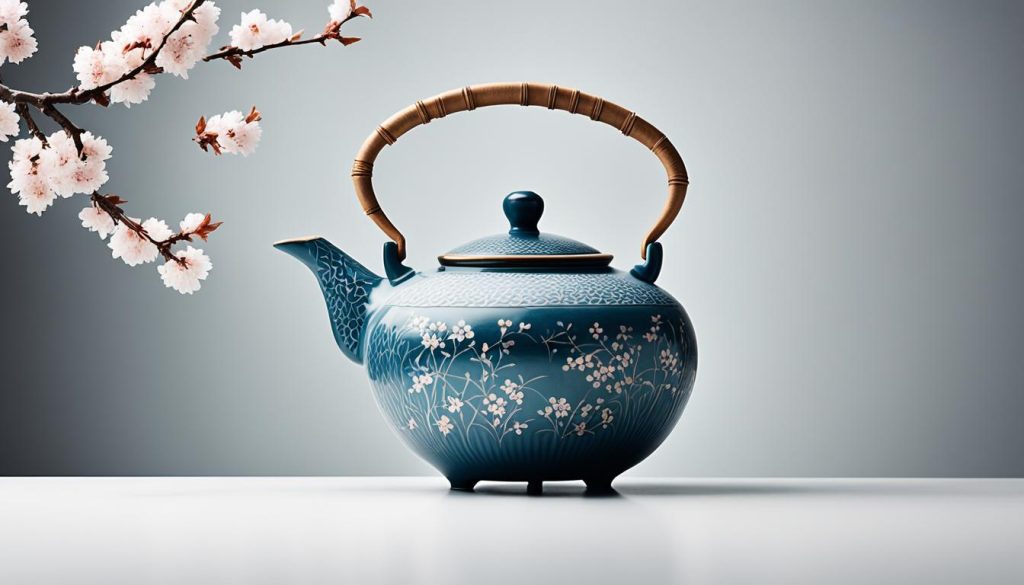
Technological Advancements and Mass Production
The Industrial Revolution changed the world, especially how teapots were made. New technologies sped up teapot production and made it better. This allowed teapots to be made in huge amounts, making them affordable for everyone.
Teapots started coming in many materials during this time. Porcelain teapots in bright colors and with fancy designs became very popular. They brought elegance to tea times. There were also special teapots made from silver and pewter that were common in many homes. They showed off the fancy and decorative style of the Victorian era.
With the mix of different materials and mass production, teapots began to look very different. Teapots now came in all kinds of shapes, sizes, and decorations. People could find teapots that really matched their style and homes. This was a big change in teapot making.
The use of multiple materials also meant that teapot design could be more creative. Teapots could be made from ceramic, porcelain, silver, pewter, and even glass. Each material gave teapots a special look and feel.
The Industrial Revolution truly transformed teapot making. It made teapots available to more people and allowed for cool new designs. Thanks to technology and various materials, the teapot industry became a big deal. It still interests tea lovers and collectors today.
Conclusion
The story behind teapot design is a journey full of fascinating moments. It mirrors changes in culture, tech, and design over time. From ancient Chinese zisha clay teapots to the modern, unique designs of today, the journey goes on.
Now, teapots are not just for tea but pieces of art too. Designers take ideas from nature, art, and what’s trending to create many styles. You can find sleek, simple teapots or fun, colorful ones, fitting any preference.
Teapots are more than tools; they symbolize tradition and skill. They delight tea fans, collectors, and those who love design. As their design story keeps growing, more amazing and original teapots are bound to come our way.
